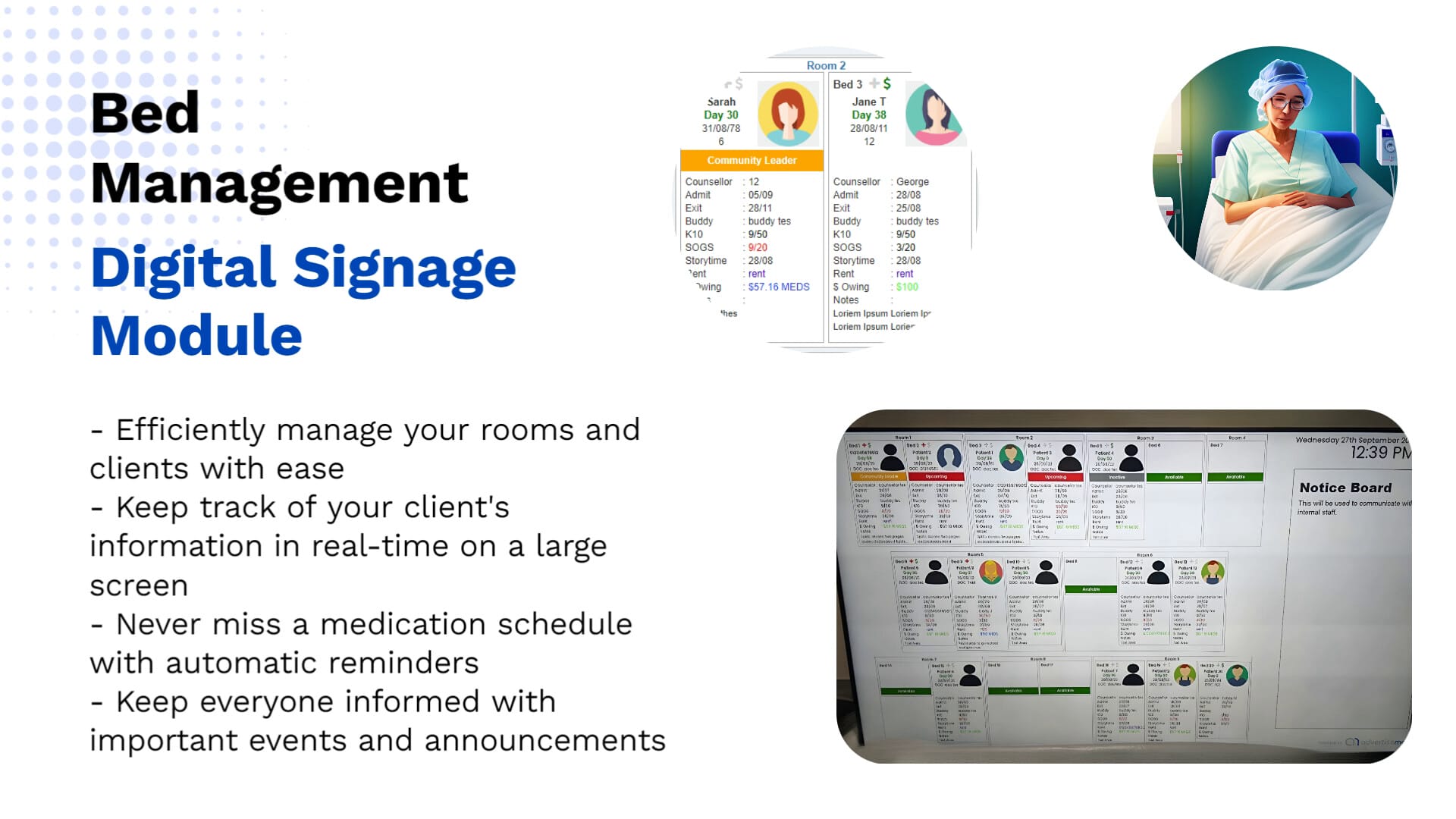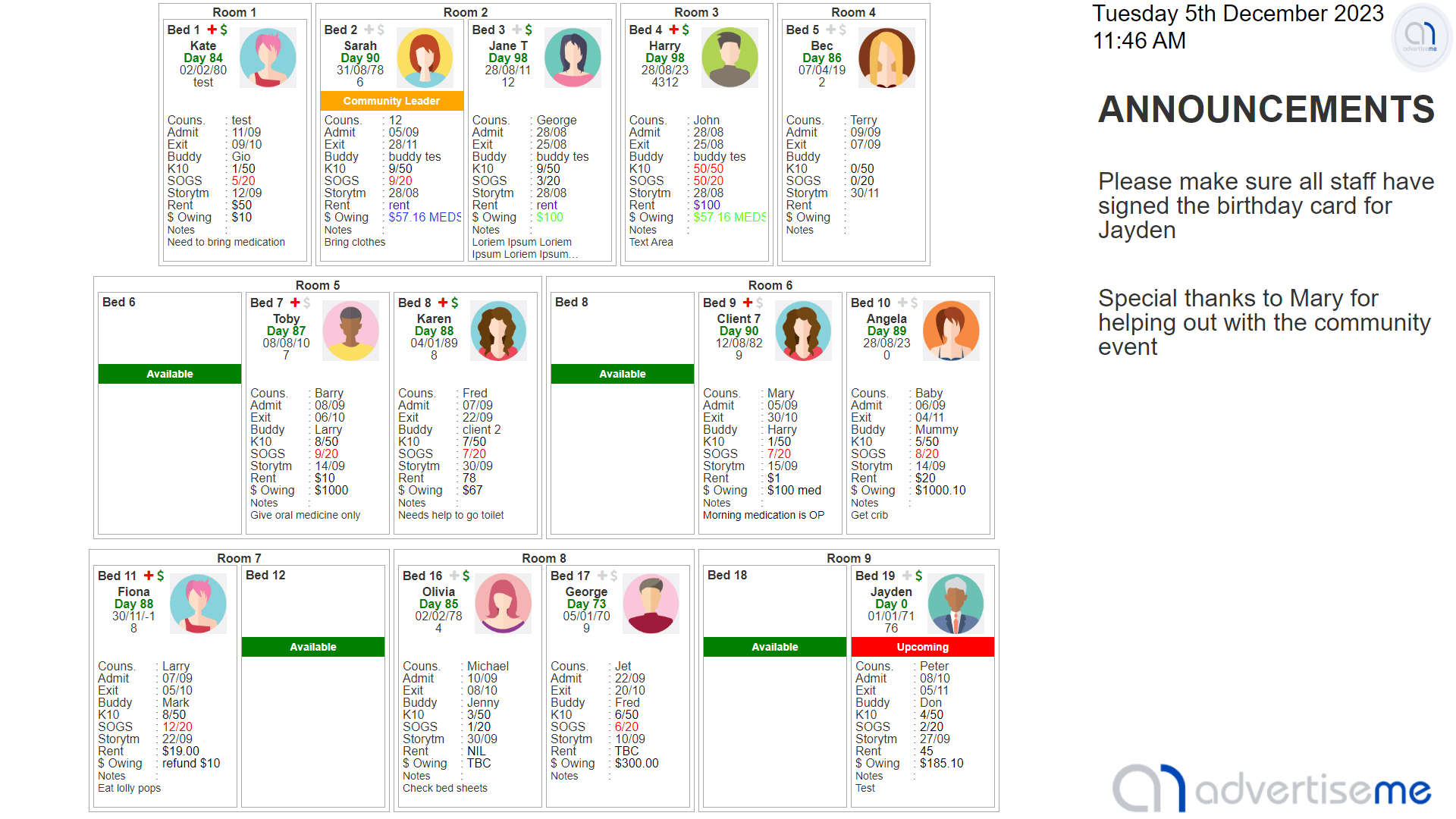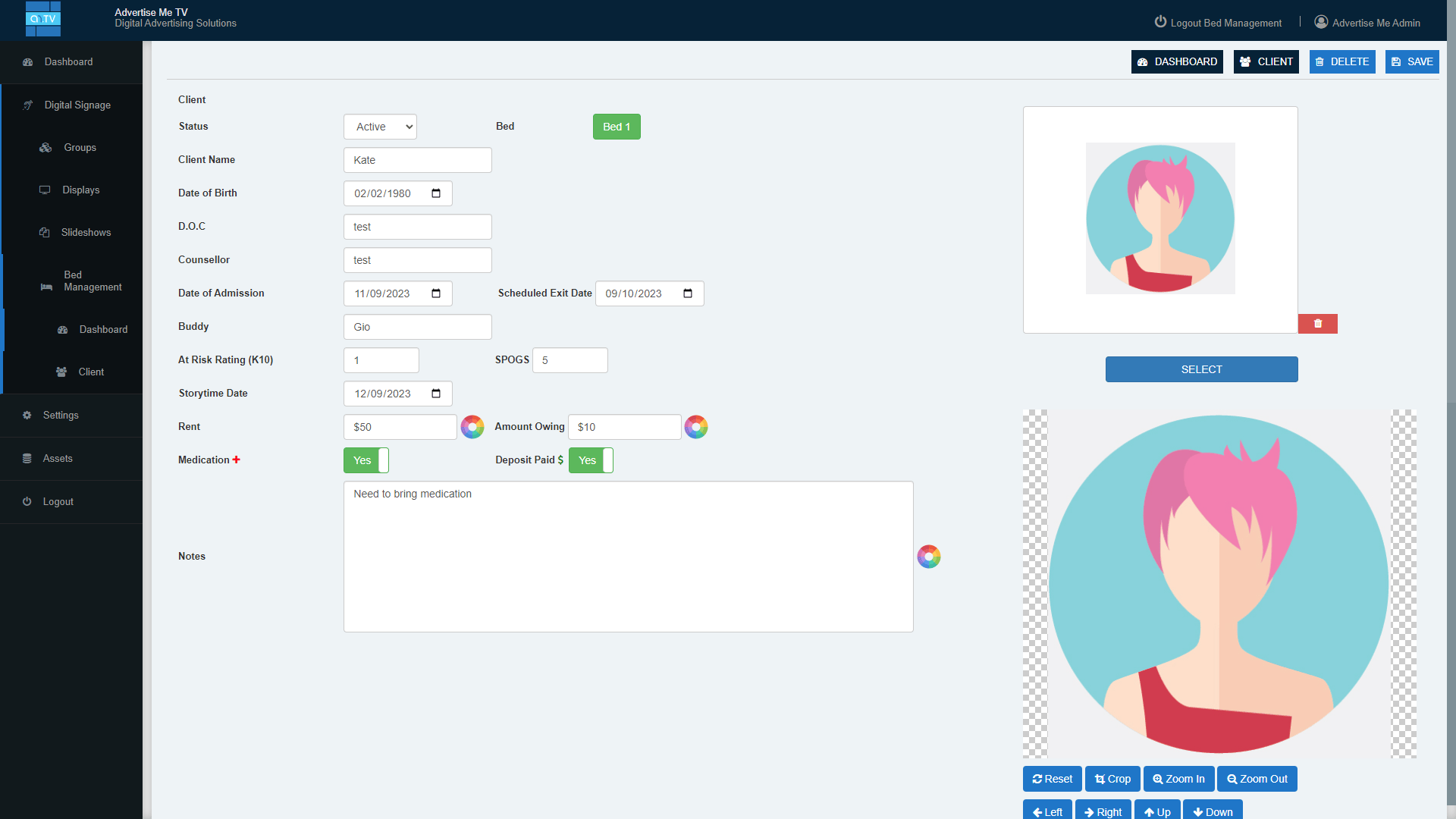Hospitals are complex systems that require efficient and effective management to ensure smooth operations and quality patient care. Given the increasing demands on healthcare, it has become vital for hospitals to streamline their processes and optimise resource allocation including beds. We have several clients in the healthcare industry including hospitals and have developed a Bed Management System (BMS). Our innovative digital solutions system not only enhances patient flow management but also improves bed occupancy rates, reduces wait times, and ultimately maximises overall hospital productivity.
These features enable hospitals and healthcare facilities to anticipate patient needs and allocate resources accordingly, reducing the risk of overcrowding and ensuring that patients receive timely and appropriate care. Moreover, these systems can be customised to meet the unique needs of each hospital, ensuring that they are optimised for efficiency and effectiveness. Healthcare centres can choose from a range of modules and features, including real-time bed tracking, discharge planning, and patient registration, among others. As technology advances, we can expect to see even more innovative solutions in the field of bed management. For instance, some hospitals are experimenting with using artificial intelligence (AI) and machine learning to predict patient demand and optimise bed utilisation. These cutting-edge technologies have the potential to further enhance hospital operations and improve patient outcomes.

The adoption of modern bed management systems is a positive trend for the healthcare industry. By leveraging technology to automate administrative tasks and improve resource allocation, hospitals can improve patient care and streamline operations, ultimately leading to better outcomes for patients and healthcare providers alike.
Implementing a hospital bed tracking system can greatly enhance patient flow and overall hospital operations.
- Real-time visibility: With the use of bed tracking systems, healthcare staff can have real-time visibility into bed availability and occupancy status, allowing for better patient placement decisions.
- Streamlined processes: By automating the process of allocating beds to patients, hospitals can streamline their operations and reduce waiting times for incoming patients.
- Improved communication: Bed tracking systems enable efficient communication between different departments within the hospital, ensuring that all resources are effectively utilised.
Combined with our digital wayfinding solutions we are able to integrate our bed management system to display were patients are located in the building and route visitors to the rooms or beds. Overall, implementing a hospital bed tracking system revolutionises how hospitals manage their bed inventory and improves patient outcomes by optimising patient flow throughout the facility. Streamlining resource allocation in healthcare facilities is crucial for efficient hospital operations. Implementing a bed management system has revolutionised the way hospitals manage their beds and medical resources.
With a bed management system, hospitals can effectively optimise patient flow and ensure that each individual receives timely care. This innovative solution helps avoid bottlenecks in admitting and discharging patients, reducing wait times and improving overall patient satisfaction.
Furthermore, real-time data provided by a bed management system allows healthcare professionals to make informed decisions regarding resource allocation. By having access to accurate information on available beds, staff can assign patients to suitable units more efficiently. This not only maximises the use of existing resources but also minimises costs associated with unnecessary transfers or extended stays.
In summary, implementing a bed management system has modernised hospital operations by streamlining resource allocation and optimising patient flow. With this revolutionary technology, healthcare facilities have experienced improved efficiency, reduced wait times, increased patient satisfaction levels, and better financial performance.

The implementation of bed scheduling software in hospitals has drastically improved operational efficiency.
- Streamlined Patient Allocation: With the use of bed management systems, hospitals can effectively allocate beds to patients based on their medical conditions and urgency of care. This ensures that beds are utilised optimally and reduces the time patients spend waiting for accommodations.
- Real-Time Updates: Bed scheduling software provides real-time updates on the availability of beds in different departments or units within a hospital. This allows staff members to access accurate information instantly, minimising confusion and delays in patient transfers.
- Improved Communication: The software facilitates seamless communication between various healthcare professionals involved in patient care, including doctors, nurses, and administrative staff. They can easily coordinate bed assignments and transfers, ensuring smooth transitions throughout a patient’s hospital stay and by combining with our digital display screens, communication messages can be displayed in real time.
- Data-driven Decision Making: With access to comprehensive data on bed occupancy rates, average lengths of stay, and discharge times, hospital administrators can make more informed decisions regarding resource allocation and capacity planning.
By adopting bed scheduling software, hospitals are able to enhance operational efficiency by efficiently managing the allocation of available beds while effectively communicating among healthcare professionals.
A patient bed management system is revolutionising hospital operations by significantly optimising occupancy rates. Efficient bed utilisation is a critical aspect of providing quality care and optimising resources in hospitals. A patient bed management system can automate the process of assigning and tracking patient beds, which can help hospitals effectively manage capacity and streamline patient flow. By providing real-time data on available beds, healthcare staff can quickly assign patients to appropriate accommodations and reduce wait times.
 Another benefit of implementing this system is improved discharge planning. Hospitals can proactively plan for discharges by identifying patients ready to be discharged in advance, allowing for smooth transitions between patients and freeing up beds for incoming admissions. This helps minimise overcrowding in emergency departments and ensures that all patients receive timely care.
Another benefit of implementing this system is improved discharge planning. Hospitals can proactively plan for discharges by identifying patients ready to be discharged in advance, allowing for smooth transitions between patients and freeing up beds for incoming admissions. This helps minimise overcrowding in emergency departments and ensures that all patients receive timely care.
Accurate demand forecasting is also possible with a bed management system. The system collects data on historical admission patterns, enabling hospitals to predict future demand accurately. By having insights into expected admissions, medical facilities can allocate resources more efficiently, ensuring they have the necessary number of beds available at any given time.
The implementation of a hospital occupancy management system is crucial as hospitals strive to improve efficiency and patient care. This innovative solution streamlines the process of tracking bed availability and patient movements by providing real-time information on bed occupancy. This system allows healthcare providers to make informed decisions regarding patient admissions, transfers, and discharges. It eliminates guesswork and reduces the risk of over or underutilising resources, which in turn optimises staff allocation and improves patient flow throughout the facility.
With this technology in place, nurses no longer need to manually update bed statuses on whiteboards or make multiple phone calls to determine room availability. The digital interface offers a centralised view of all beds within the hospital, displaying each unit’s status so that staff can easily identify vacancies or pending discharges. The system also generates automatic alerts when beds become available or reservations are about to expire.
Apart from operational benefits, implementing a hospital occupancy management system enhances patient safety by reducing overcrowding and ensuring appropriate care levels for each individual case. The automated platform improves coordination between departments, resulting in smoother transitions between units during patients’ stay at the hospital.
Overall, investing in a sophisticated bed management solution is not only cost-effective but also vital for enhancing both operational efficiency and patient care outcomes. Hospital room management software plays a crucial role in achieving efficient room utilisation. This software can automatically assign rooms based on patient needs, availability, and proximity to necessary resources. The software provides real-time updates on room status, allowing staff to quickly identify vacant rooms or those that require cleaning or maintenance. By automating the discharge process, the software ensures that rooms are promptly prepared for new admissions. The software also facilitates seamless communication between various departments involved in patient transfers and bed turnover. Comprehensive data analytics enable administrators to identify bottlenecks in room utilisation and make informed decisions to improve efficiency.
By implementing hospital room management software, healthcare facilities can maximise their capacity, reduce wait times, improve patient flow, and enhance overall operational efficiency – ultimately leading to better patient outcomes. Hospitals face the constant challenge of reducing turnover time for beds, as it directly impacts patient flow and overall productivity. A bed turnover management system is revolutionising hospital operations by streamlining the process and improving efficiency.
Improved communication: The system allows real-time updates on bed availability, enabling staff to efficiently coordinate with different departments and allocate resources accordingly. This reduces delays in admitting patients and ensures smooth transitions between different stages of care.
Automated processes: Manual tasks such as updating spreadsheets or making phone calls are eliminated, freeing up staff members to focus on critical patient care responsibilities. By automating these processes, hospitals can significantly reduce turnaround times, leading to improved patient satisfaction and better resource allocation.
Enhanced data analysis: The system provides comprehensive data on bed utilisation rates, discharge times, and various other metrics that can be analysed to identify bottlenecks and optimise workflows. With this valuable information at their fingertips, hospital administrators can make informed decisions regarding staffing levels and resource allocation to further reduce turnover times.
Implementing a bed turnover management system is a game-changer for hospitals looking to maximise efficiency while providing high-quality care. It enables seamless communication among healthcare professionals while eliminating manual tasks that often cause delays in transferring patients from one stage of care to another. Through enhanced data analysis capabilities, this innovative solution empowers hospitals with insights necessary for continuous improvement in reducing turnover time – ultimately boosting overall productivity within the facility. Check out our bed management system software:
